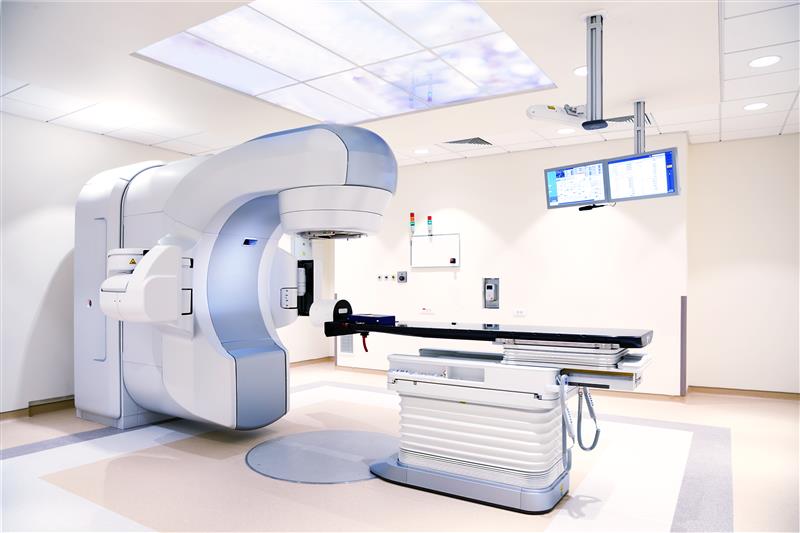Table of Contents
Introduction: Radiation Therapy
Radiation therapy is a crucial tool in the fight against cancer, offering a targeted approach to destroy cancer cells. As a cornerstone of cancer treatment, radiation oncology works alongside surgical oncology and medical oncology to provide comprehensive care for patients.
This article will serve as a guide to radiation therapy, addressing many common questions you may have about the treatment. We’ll cover what it is, how it works, its different types, and what to expect during treatment at Unio Specialty Care – Radiation Oncology (previously known as Genesis Radiation Oncology). Whether you’re facing cancer yourself or supporting a loved one, understanding radiation therapy can empower you to make informed decisions about your care.
What is Radiation Therapy?
Radiation therapy uses high doses of radiation (high energy rays, such as X rays, gamma rays, or particle beams) to kill cancer cells or keep them from growing and dividing. Unlike chemotherapy, which can affect the entire body, radiation therapy is localized, meaning it targets specific areas where cancer is present, often times in concert or as a substitute to surgery depending on the type and stage of the cancer.
Radiation therapy is a critical component of a comprehensive cancer treatment strategy, providing targeted relief when the cancer is producing symptoms, and improving the chances of a successful long-term outcome.
How Does Radiation Therapy Work?
Radiation therapy works by damaging the DNA inside cancer cells, which inhibits their ability to reproduce. Over time, the damaged cancer cells die, and the body naturally eliminates them. Imagine the DNA as a set of instructions; when these instructions are disrupted, the cancer cells can’t function properly and ultimately die.
Healthy cells can also be affected by radiation, but they have a greater ability to repair themselves compared to cancer cells. Modern radiation therapy techniques are designed to deliver the maximum dose to cancer cells while minimizing exposure to surrounding healthy tissues, thereby reducing potential side effects. According to studies, approximately 30-50% of cancer patients receive radiation therapy during their treatment, highlighting its significance in modern oncology.
What Are the Types of Radiation Therapy?
1. External Beam Radiation Therapy (EBRT)
2. Internal Radiation Therapy (Brachytherapy)
What Type of Cancer is Treated With Radiation Therapy
Radiation therapy is a versatile cancer treatment method that can be employed alone or in combination with other treatments to treat many types of cancer, including:
- Breast Cancer
- Prostate Cancer
- Lung Cancer
- Head and Neck Cancers
- Colorectal Cancer
- Skin Cancer
- Brain Tumors
- Gynecologic cancers
- Pancreas
- Liver
- Kidney and bladder
- Lymph nodes
- Sarcoma
- Metastatic lesions throughout the body
- Difficult recurrent lesions after prior radiotherapy
Radiation therapy’s ability to precisely target cancer cells while sparing healthy tissue makes it a critical component in the treatment of many cancer types.
How Does Radiation Therapy Tie into the Three-Prong Approach to Cancer Treatment?
Surgical Oncology
Medical Oncology
Utilizes chemotherapy, immunotherapy, and other medications to treat cancer. Radiation therapy can enhance the effectiveness of these treatments by destroying any residual cancerous deposits that were not entirely eradicated by the chemotherapy.
Together, these three approaches provide a comprehensive strategy to treat cancer, tailored to the specific needs of each patient. Radiation therapy’s precision and effectiveness make it an invaluable component of cancer care, helping to improve outcomes and quality of life for many patients.
How Long Does Radiation Therapy Treatment Last?
The duration of radiation therapy treatment varies from patient to patient. Generally, treatments can range from a single session to several weeks. Most commonly, radiation therapy is administered five days a week over several weeks to allow healthy cells time to recover between sessions. Each session typically lasts about 10 to 30 minutes, with the exception of Cyberknife treatment which can last 20-80 minutes. Most of the time in a Radiation Therapy session is spent positioning your body correctly.
Some treatments may be condensed into shorter courses or even single sessions, especially for advanced cancers or for symptom relief. The specific schedule and duration are tailored to each patient’s unique needs, ensuring the most effective and personalized treatment plan.
How Can Unio Specialty Care Treat You With Radiation Therapy?
Unio Specialty Care offers state-of-the-art radiation therapy through a fully integrated, multidisciplinary approach. We prioritize patient-centered care, ensuring customized treatment plans that minimize side effects and preserve healthy tissue. Our advanced technology and collaborative team of specialists provide exceptional care that distinguishes us from other providers. Experience the Unio Specialty Care difference and take the next step in your cancer treatment journey by scheduling an appointment today at Unio Specialty Care. Let us support you with expertise, innovation, and compassionate care.
- By: Unio Specialty Care, Published: 7/11/24
- Medically Reviewed By: Reza Shirazi, MD, EE, FACRO, Donald B. Fuller, MD, Tahir Ijaz, MD, FRCP, FACRO, Siavosh Vakilian, MD, FRCP(C), DABR – 7/10/24

